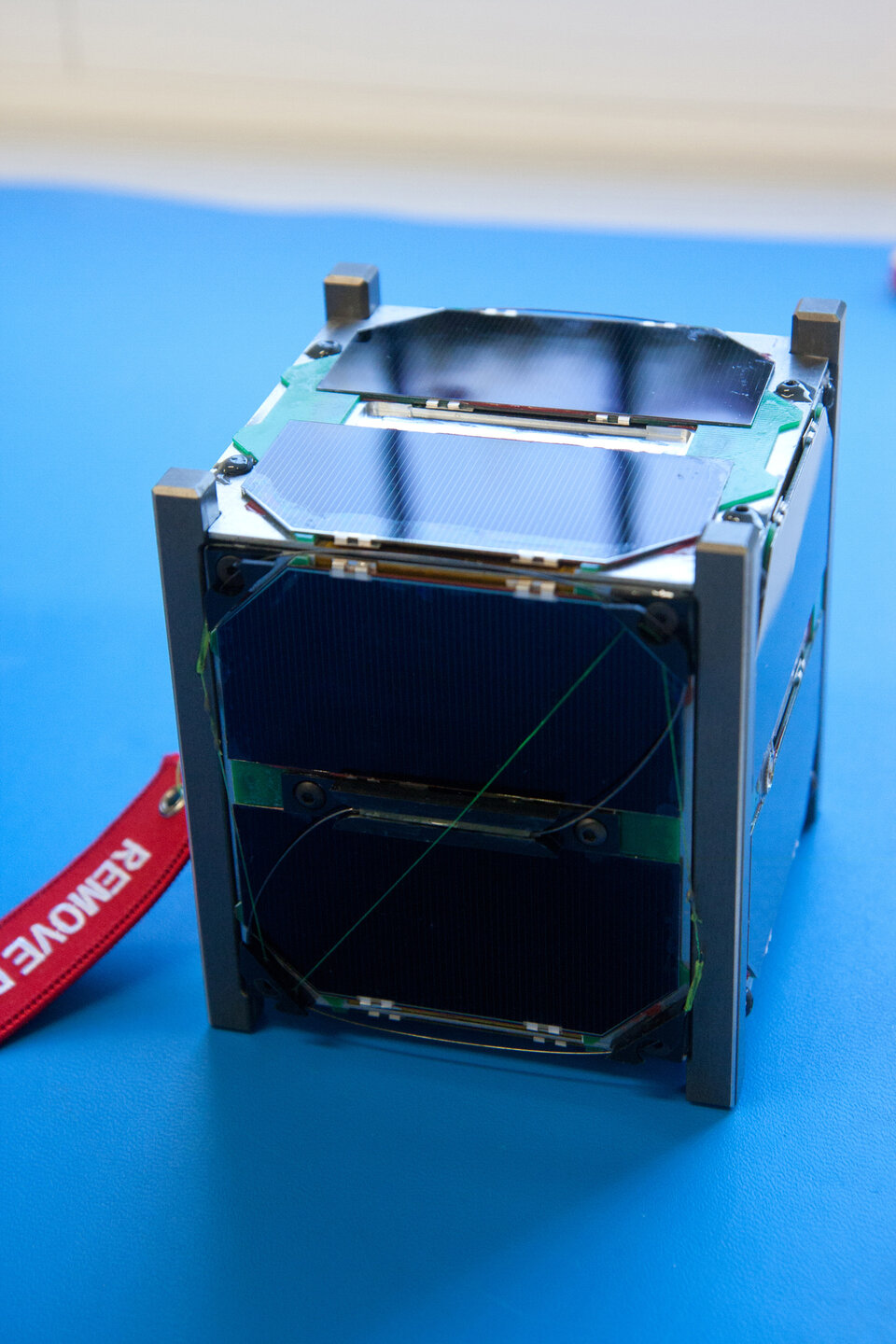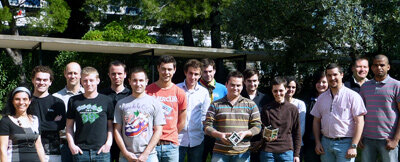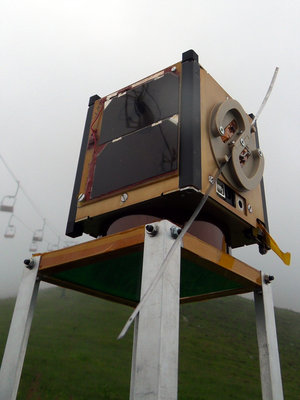Meet the teams: Robusta
Seven teams of university students were selected to fly their CubeSats on the maiden flight of ESA's Vega launch vehicle. Here is an introduction to the French Robusta team.
| University | Université Montpellier 2 |
| Endorsing professors | Laurent Dusseau, Sylvie Jarrix, Jérome Boch, Jean Roch Vaillé, Gerard Gervois, Thierry Fiol, Fred Giamarchi, Julien Christine, Bernard Clotilde, Valérie Ponsa, Julien Averseng, Jean François Dubé , Jean Marc Gallière |
| Team | Muriel Bernard, Amable Blain, Cyril Bonneau, Nabil Boureghda, Christelle Deneau, Stéphanie Dhombres, Adrien Doridan, Lucas, Pradier, Gauthier Gibert, Stéphanie Perez, Thomas Balard, Fabien Roig, Victor Gasia, among others |

Robusta was initiated by the radiation effects group (RADIAC) at the Université Montpellier 2 (UM2) which, with 30 years of experience, is one of the world’s leading groups in its field. The CubeSat followed on from the group’s involvement in the development of a radiation effect payload on board the SACRED satellite.
Although SACRED was lost during launch in 2006, the group was aware that the different departments of UM2 possessed all of the knowledge necessary to build a small satellite. Their opportunity to become involved in a real hands-on project came in 2006, with the launch of the EXPRESSO (EXpérimentations et Projets Etudiants dans le domaine des SystèmeS Orbitaux et des ballons) student initiative by the French Space Agency, CNES.
A CubeSat team was put together by professors and students from the Montpellier Faculty of Science, the Polytech's High School of Engineering, and the Institute of Technology at Nîmes, and Robusta was one of three student projects selected under EXPRESSO. It was subsequently chosen by ESA as an educational payload on the maiden flight of the Vega launcher.
The objective of the mission is to measure the effects of exposing bipolar electronic components to prolonged low doses of ionising radiation. The Robusta payload will send back data on the degradation of key parameters of integrated circuits, which are commonly used in the aerospace industry. Each parameter will be measured every 12 hours, while measurements of the radiation dose will be received every 90 minutes, and temperature data every 6 minutes.
The data showing the performance of the electronic circuits will be sent to the ground for analysis and comparison with results obtained during ground tests developed by the UM2 radiation effects group. The monitoring of the radiation dose with the OSL radiation sensor, developed by UM2, will also provide valuable information on Earth's radiation belts.
The experiment will provide valuable results not only for the group, but for the whole space radiation effects community. The harsh radiation environment that will be encountered during the satellite's first months in orbit is particularly suitable for performing this kind of study.
The CubeSat experience

How did the team members deal with the experience of CubeSat selection, design, construction, testing and integration?
"During the project, older students took charge of the younger ones. Because there was a place for everyone, recruitment was possible by word of mouth.
"One of the most exciting challenges was the difficulty of having both students and professors from different sites, different schools and technical backgrounds working together on a project. It required strong project and documentation management, but, above all, a real team spirit was raised. Since we received technical and financial support from CNES, we benefited from the mentoring of CNES experts, who provided guidance at all stages of the project."
Read more about Robusta on their website.






